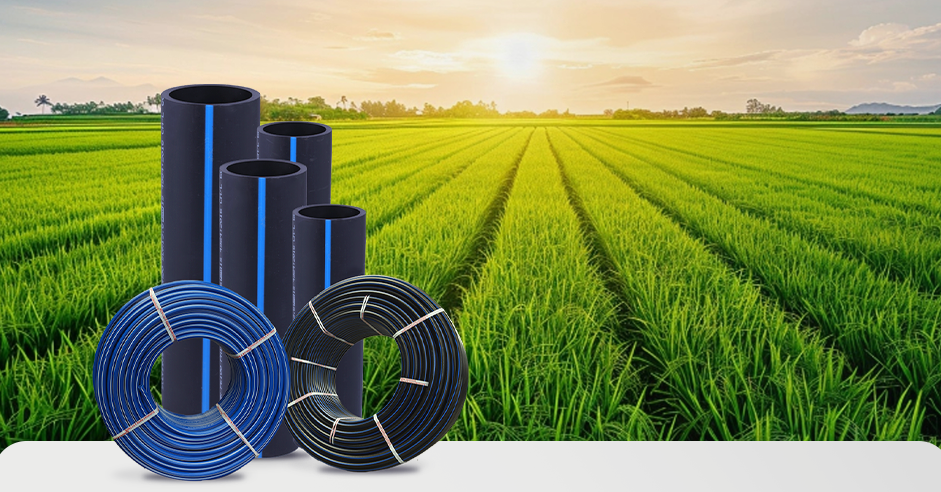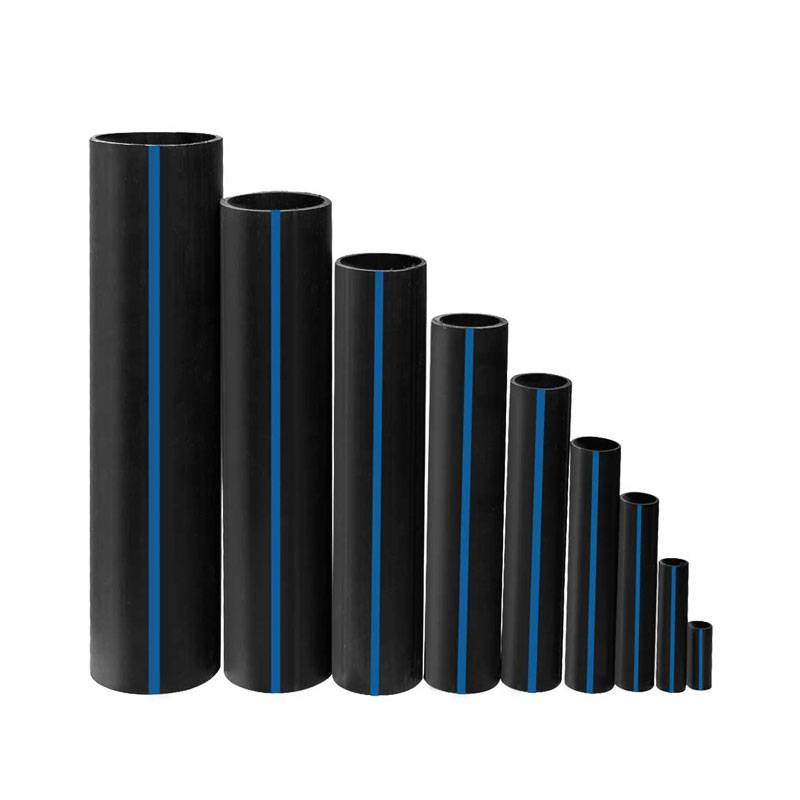Recognizing the Trick Advantages of HDPE Pipeline for Water and Wastewater Management
The use of HDPE pipeline in water and wastewater monitoring provides numerous benefits that warrant factor to consider. Its outstanding resilience and long lifespan make it a preferred selection for numerous projects. Additionally, the product's resistance to deterioration and chemical damages boosts its integrity in different settings. Nonetheless, the advantages prolong past simply durability and resistance. Discovering its cost-effectiveness and environmental effect discloses a lot more engaging reasons for its prevalent adoption in modern-day framework
Remarkable Resilience and Durability

HDPE pipe stands out for its remarkable durability and long life, making it a recommended selection in water management systems. Created from high-density polyethylene, these pipes can withstand considerable pressure and stress, guaranteeing dependable performance in time. Their robust nature allows them to withstand severe ecological problems, consisting of temperature level variations and soil activities, which can cause other products to stop working.
The lifespan of HDPE pipelines often goes beyond 50 years, providing a cost-efficient solution for towns and sectors alike. In addition, the product's lightweight homes simplify setup, reducing labor costs and durations. This resilience decreases the need for frequent repair services or substitutes, further improving its economic charm.
In water management applications, the reliability of HDPE pipes means less interruptions and boosted service continuity, making them integral to sustainable facilities advancement. The mix of sturdiness and durability strengthens HDPE's role as a foundation in efficient water management options.

Resistance to Rust and Chemical Damages
While numerous materials catch corrosion and chemical damages in time, HDPE pipes show amazing resistance, making them excellent for different water administration applications. This resilience originates from the molecular structure of high-density polyethylene, which is inherently non-reactive and does not wear away like steels or weaken from direct exposure to extreme chemicals. As an outcome, HDPE is extremely efficient in environments with hostile compounds, such as wastewater systems that might consist of acids, bases, and organic solvents.
In addition, HDPE pipes can hold up against ecological variables such as soil acidity and saline conditions, further enhancing their viability for varied applications (American Plastics HDPE Pipe Manufacturing). Their capability to keep structural honesty gradually decreases the risk of leakages and failings, which is essential in ensuring the safety and integrity of water circulation and wastewater monitoring systems. Consequently, the resistance to rust and chemical damage markedly contributes to the total efficiency and durability of HDPE piping services
Cost-Effectiveness and Economic Benefits
When taking into consideration the economic implications of water monitoring systems, the cost-effectiveness of HDPE pipes ends up being apparent. These pipelines use lower installation and maintenance costs compared to standard products like metal or concrete. Their lightweight nature simplifies transport and installation, resulting in reduced labor costs. Additionally, HDPE pipelines show a long life-span, frequently exceeding half a century, which converts to fewer substitutes and long-term savings.
Moreover, the resistance of HDPE to rust and chemical damage decreases the requirement for expensive repair services and substitutes. The pipes additionally support efficient water circulation, decreasing energy prices connected with pumping systems. By minimizing leaks and water loss, HDPE pipes add to substantial economic benefits for municipalities and sectors alike. In general, the initial investment in HDPE piping can yield substantial financial returns over the lifespan of the water management system, making it a prudent option for lasting framework growth.
Environmental Sustainability and Decreased Influence

Versatility and Adaptability in Setup
Because of their one-of-a-kind properties, HDPE pipes offer amazing convenience and versatility in installment, making them ideal for a large range of applications. Their lightweight nature permits less complicated handling and transport, decreasing labor costs and installation time. HDPE pipes can be curved and formed to fit various surfaces and task requirements, which is specifically beneficial in challenging atmospheres.
Furthermore, their resistance to rust and chemical damages permits installment in varied setups without the need for specialized protective layers. The ability to fuse joints produces a constant, leak-free system, boosting the general stability and integrity of the installment. HDPE's versatility likewise accommodates ground movement, decreasing the danger of damages in locations vulnerable to changing dirt. Overall, these qualities make HDPE pipelines not only functional however additionally a preferred selection for water and wastewater administration systems.
Often Asked Concerns
How Does HDPE Pipeline Compare to PVC in Water Administration Applications?
HDPE pipeline offers remarkable flexibility, resistance to corrosion, and durability contrasted to PVC. Its lighter weight assists in much easier setup, while its lengthy life-span reduces substitute costs, making HDPE a recommended choice in water monitoring applications.
What Is the Life Expectancy of HDPE Pipeline Under Common Problems?
Under typical conditions, HDPE pipelines can have a life expectancy varying from 50 to 100 years. Their sturdiness and resistance to corrosion contribute to their long-lasting efficiency in different applications, making them a dependable selection for infrastructure.
Are HDPE Pipeline Recyclable After Their Service Life?
Yes, HDPE pipes are recyclable after their life span. Pipe Supplier American Plastics Midland. They can be refined and repurposed into brand-new items, substantially reducing ecological effect and promoting sustainability within the market, making them a green selection for piping options
What Is the Installment Process for HDPE Pipes?
The installment process for HDPE pipes includes website prep work, trenching, pipeline combination or mechanical signing up with, backfilling, and stress testing. Proper methods assure a long lasting and efficient system for transferring water and wastewater efficiently.
Can HDPE Pipeline Be Utilized for Both Safe And Clean and Non-Potable Water Solutions?
Yes, HDPE pipelines can be utilized for both potable and non-potable water systems. Their versatility, sturdiness, and resistance to rust make them appropriate for various applications, making certain safe and efficient transportation of water in different contexts.